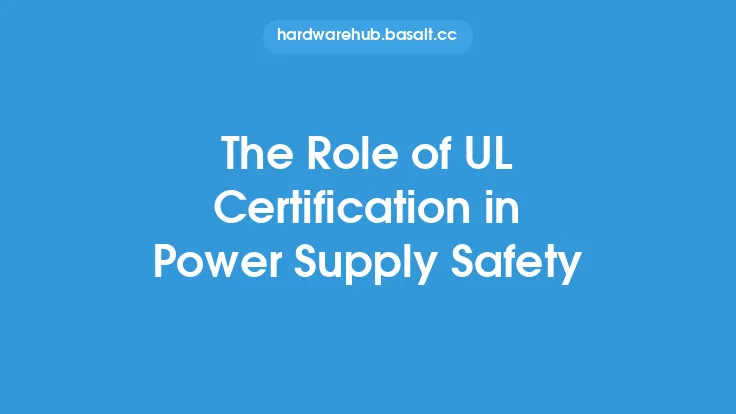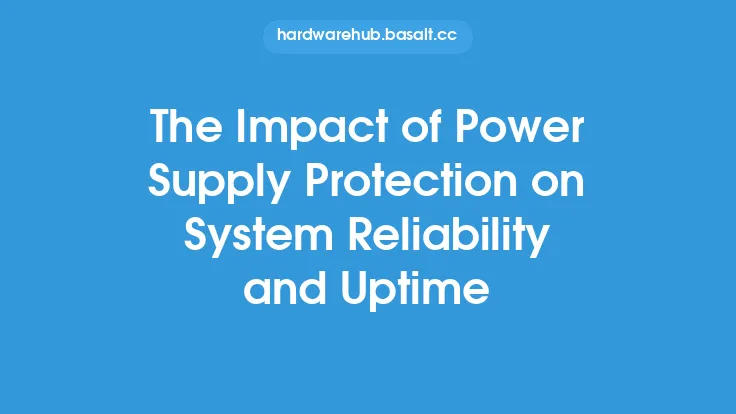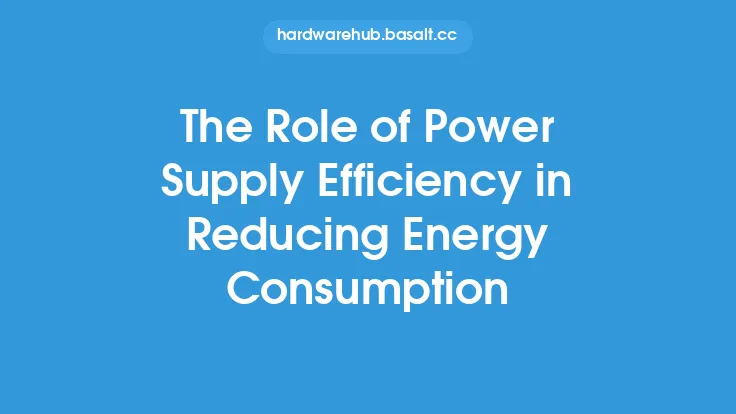Power supply units (PSUs) are a critical component in many electronic devices, providing the necessary voltage and current to ensure proper operation. However, power supplies can be susceptible to various types of faults and anomalies, including undervoltage conditions. Undervoltage protection is a crucial feature in power supply units that helps prevent damage to the device and ensures safe operation. In this article, we will delve into the role of undervoltage protection in power supply units, its importance, and how it works.
Introduction to Undervoltage Protection
Undervoltage protection is a protection feature that prevents a power supply unit from operating at voltages lower than the specified minimum voltage. This feature is essential in ensuring that the power supply unit does not supply power to the load at voltages that can cause damage or malfunction. Undervoltage protection is typically implemented using a voltage sensing circuit that monitors the output voltage of the power supply unit and shuts down the unit if the voltage falls below a predetermined threshold.
How Undervoltage Protection Works
The undervoltage protection circuit in a power supply unit typically consists of a voltage sensor, a comparator, and a shutdown circuit. The voltage sensor monitors the output voltage of the power supply unit and provides a feedback signal to the comparator. The comparator compares the feedback signal with a reference voltage and generates a shutdown signal if the output voltage falls below the reference voltage. The shutdown circuit then shuts down the power supply unit, preventing it from supplying power to the load. The shutdown circuit can be implemented using a variety of techniques, including pulse-width modulation (PWM) shutdown, analog shutdown, or digital shutdown.
Importance of Undervoltage Protection
Undervoltage protection is essential in power supply units because it helps prevent damage to the device and ensures safe operation. If a power supply unit operates at voltages lower than the specified minimum voltage, it can cause a range of problems, including reduced efficiency, increased heat generation, and damage to the load. Undervoltage protection helps prevent these problems by shutting down the power supply unit if the output voltage falls below a predetermined threshold. This feature is particularly important in applications where the power supply unit is subject to voltage fluctuations or brownouts.
Types of Undervoltage Protection
There are several types of undervoltage protection circuits used in power supply units, including fixed voltage protection, adjustable voltage protection, and programmable voltage protection. Fixed voltage protection is the most common type of undervoltage protection, where the shutdown threshold is fixed at a predetermined voltage. Adjustable voltage protection allows the shutdown threshold to be adjusted using a potentiometer or a resistor divider network. Programmable voltage protection allows the shutdown threshold to be programmed using a microcontroller or a digital signal processor.
Implementation of Undervoltage Protection
Undervoltage protection can be implemented using a variety of techniques, including analog circuits, digital circuits, and microcontrollers. Analog circuits are the most common implementation, where a voltage sensor and a comparator are used to generate a shutdown signal. Digital circuits can also be used, where a microcontroller or a digital signal processor is used to monitor the output voltage and generate a shutdown signal. Microcontrollers can also be used to implement more complex undervoltage protection algorithms, including voltage monitoring, current monitoring, and temperature monitoring.
Benefits of Undervoltage Protection
Undervoltage protection offers several benefits, including improved safety, increased reliability, and reduced maintenance. By shutting down the power supply unit if the output voltage falls below a predetermined threshold, undervoltage protection helps prevent damage to the device and ensures safe operation. This feature is particularly important in applications where the power supply unit is subject to voltage fluctuations or brownouts. Undervoltage protection also helps increase reliability by preventing the power supply unit from operating at voltages that can cause malfunction or damage.
Applications of Undervoltage Protection
Undervoltage protection is used in a wide range of applications, including power supplies for computers, telecommunications equipment, medical devices, and industrial control systems. In these applications, undervoltage protection helps prevent damage to the device and ensures safe operation. Undervoltage protection is also used in renewable energy systems, such as solar and wind power systems, where the power supply unit is subject to voltage fluctuations and brownouts.
Conclusion
In conclusion, undervoltage protection is a critical feature in power supply units that helps prevent damage to the device and ensures safe operation. By shutting down the power supply unit if the output voltage falls below a predetermined threshold, undervoltage protection helps prevent a range of problems, including reduced efficiency, increased heat generation, and damage to the load. The importance of undervoltage protection cannot be overstated, and it is essential to consider this feature when selecting a power supply unit for a particular application. By understanding how undervoltage protection works and its benefits, designers and engineers can ensure that their power supply units operate safely and efficiently, even in the presence of voltage fluctuations and brownouts.





